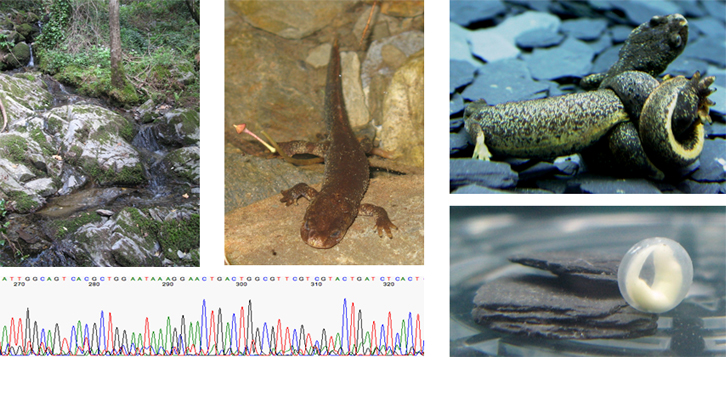The survivor of the Montseny massif

The Montseny brook newt is one of the most threatened amphibians in Europe, and it is classified as critically endangered by IUCN (the conservation organization worldwide). For more than a million and a half years, the Montseny brook newt (Calotriton arnoldi) has been defined as a species, separating from its sister species the Pyrenean brook newt. Since then, around the world, it only lives in 8 km2 of the Montseny, in fact only in seven brooks of the massif. Moreover, these brooks are separated by the Tordera river, that is a natural barrier for these animals.
The total census of the species is about 1500 individuals. Species with such restricted distribution ranges and with small and isolated populations are susceptible to genetic endogamy problems, which can affect reproductive success, and at the same time lead to even smaller populations. They are susceptible to entering what is called the vortex or spiral of extinction. Since it was discovered as a species, in 2005, genetic studies began to investigate the genetic "health status" of the species.
Surprisingly, although effective population estimates were very low, this species presented genetic diversity levels similar to those of the sister species, the Pyrenean brook newt, which has a 2500-fold wider distribution range. Moreover, there was very low kinship relationships among the populations of the Montseny brook newt and low levels of inbreeding. This species has designed some strategy in order to survive thousands of years at the gates of the extinction spiral but without entering it.
The explanation lies in the reproductive strategy. Females of this species have the ability to store sperm of multiple mating and of different males. In addition, it is believed that females are capable of selecting those that are more genetically different, thus avoiding endogamy problems. This strategy would have allowed this species to survive in small populations to this day. However, we must not forget the current risks that threaten their populations (loss or degradation of the habitat). The extinction of one or several populations could push the Montseny brook newt definitively to the spiral of extinction. In order to ensure its survival, an European Life project has begun, in which, among other actions, efforts will be made to conserve its natural habitat.
Zoology Area
Universitat Aut´ònoma de Barcelona
References
Valbuena-Ureña E, Soler-Membrives A*, Steinfartz S, Orozco-terWengel P, Carranza S (2017) No signs of inbreeding despite long-term isolation and habitat fragmentation in the critically endangered Montseny brook newt (Calotriton arnoldi). Heredity 118: 424-435. DOI: 10.1038/hdy.2016.123
See also the podcast in Heredity: http://www.nature.com/multimedia/podcast/hdy/hdypodcast_1702.mp3

